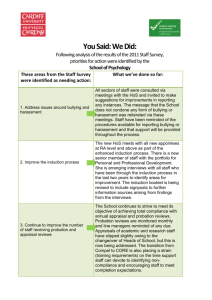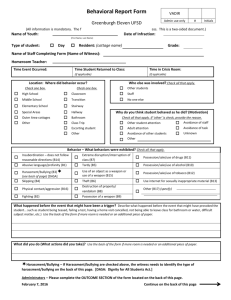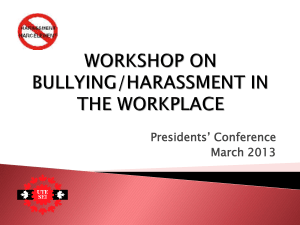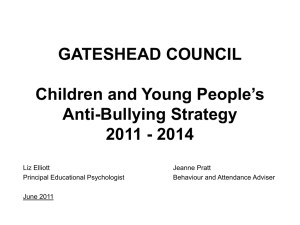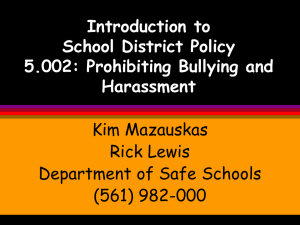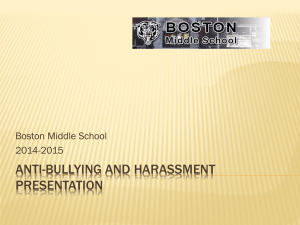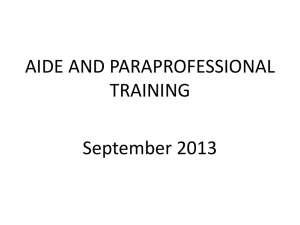The Dignity for All Students Act
advertisement
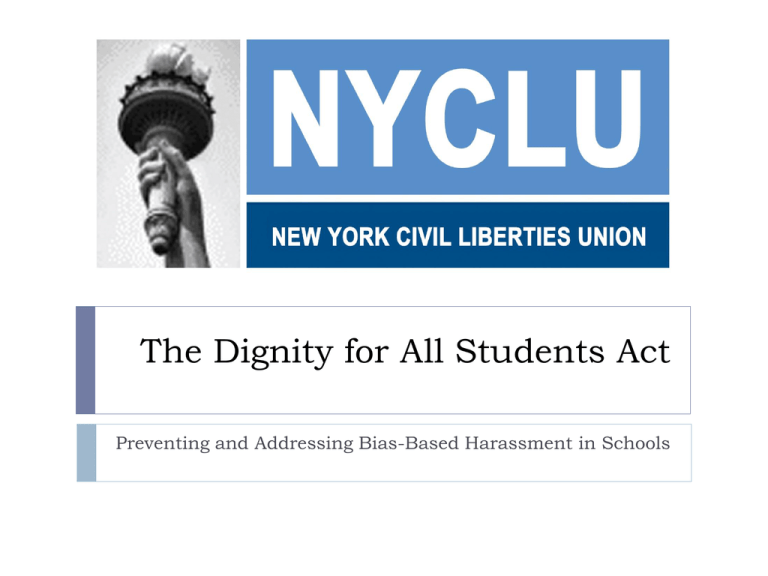
The Dignity for All Students Act Preventing and Addressing Bias-Based Harassment in Schools Addressing Bullying is a Balancing Act To teach students that certain speech is inappropriate for school while teaching them respect for the First Amendment. To respect the legitimacy of students’ privacy, opinions, and ideas while creating a safe school environment for everyone. To establish high, but realistic, expectations for young people. The Dignity for All Students Act (N.Y. Educ. Law §§10-18, 801-a) Requires districts and schools to prevent, monitor, and address bullying through: Staff training Designation of an anti-bullying coordinator Sensitivity and tolerance curricula for students Enhanced transparency Code of conduct language explaining policies and consequences Starting with the 2012-2013 school year. THE GOOD NEWS The State Education Department is working with advocates to create a statewide anti-bullying task force that will create model policies, trainings, and curricula for districts before the 2012 deadline. 20-member task force Advocacy groups NYSUT Administrators Parents & Students Working Groups Four Working Groups: State policy Local policy Curriculum Professional development Parents and educators are encouraged to get involved with the working groups. “Harassment” is: “the creation of a hostile environment by conduct or by verbal threats, intimidation or abuse that has or would have the effect of unreasonably and substantially interfering with a student’s educational performance, opportunities or benefits, or mental, emotional or physical well-being; or conduct, verbal threats, intimidation or abuse that reasonably causes or would reasonably be expected to cause a student to fear for his or her physical safety” N.Y. Educ. §11(7) (2010) The Dignity Act Covers: Bullying & harassment by students AND adults “School property” and “school functions” Bullying & harassment for any reason Bias-Based Harassment Schools have a longstanding obligation to protect students from harassment on the basis of race, color, national origin, gender, disability, and religion Title VI, Title IX, Title II, and Section 504 Dear Colleague letter from US DOE October 26, 2010 The Dignity Act expands this obligation to harassment that is not related to a protected characteristic. “Cyber Bullying” The Dignity bill prohibits bullying on school property or at a school function. Educators are not expected to “spy” on students’ out-ofschool communications. Educational resources should not be used to seek out online communications that are inappropriate. But, educators should be willing to step in when cyber bullying affects a students’ ability to function in school. “Cyber Bullying” Students have a right to free speech, especially when that speech occurs off-campus. Including unpleasant, hurtful, offensive, or mean speech. Response shouldn’t be exclusion or censorship. Cyber bullying, like all bullying, should be used as a learning experience. Usually doesn’t exist in a vacuum. Is not necessarily “worse” than other bullying. What Can Districts Do Now? Designate a staff anti-bullying coordinator Create and publicize a confidential complaint mechanism Create a procedure for responding to bullying incidents Offer training, counseling, and other positive alternatives to suspension Seek out anti-bullying resources: USDOE: www.bullyinginfo.org GLSEN: http://www.glsen.org HHS: http://www.stopbullyingnow.hrsa.gov/kids Johanna Miller Public Policy Counsel jmiller@nyclu.org Thank You!
![Bullying and Harassment Advisor role des[...]](http://s3.studylib.net/store/data/006976953_1-320eb77689e1209d082c9ec2464350ee-300x300.png)



